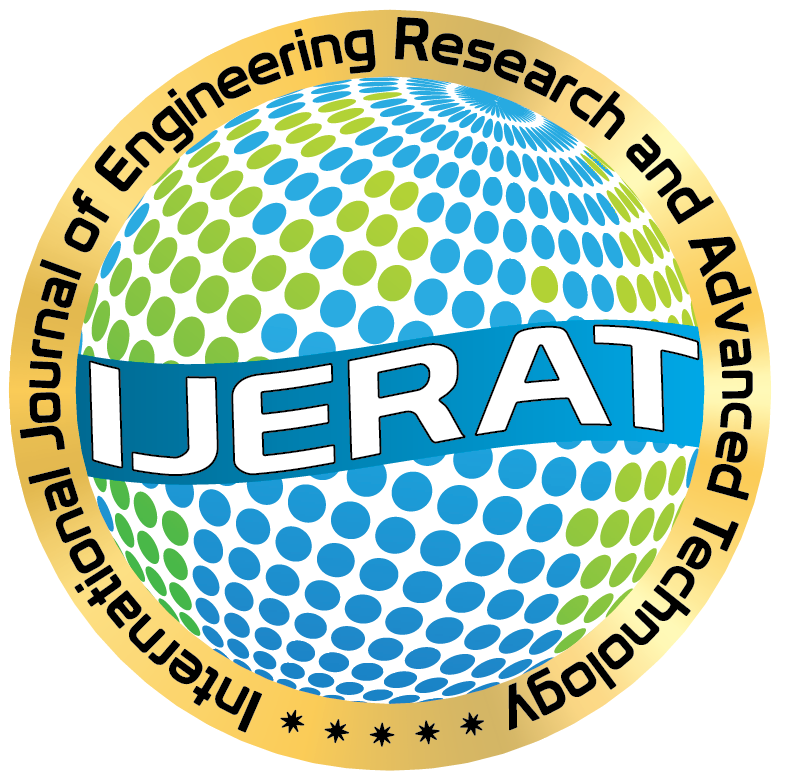Development of Secured Knowledge Management system using Information Technology Model
DOI:
https://doi.org/10.31695/IJERAT.2022.8.7.1Keywords:
Knowledge Management System, Information Technology Model, Software Engineering ModelAbstract
Information Technology (IT) has contributed to the development of many areas, including the development of companies and in accordance with the requirements of the free market, so it has become necessary to contribute to the development of the knowledge management system because of its importance in the use and dissemination of knowledge through the IT model that focuses on all the requirements of the knowledge management system. And the factors affecting its development, this model is characterized by meeting the needs of the system and upgradable, as well as being comprehensive and integrated (with other systems). The model is designed in several programming languages such as (C#, PHP and MySQL) and according to business requirements in addition to its ease of use so that everyone can use it (employees, clients, partners), and that the model has the ability to identify obstacles and errors that cause non-development, In terms of communication, it uses all technical resources (interviews, video conferences, chat rooms, etc.) to contribute to enhancing teamwork and communication, enhancing expertise and processing data and relying on human expertise to promote innovation and knowledge acquisition to achieve the real objective of this study which is to develop a knowledge management system.
References
Abbas, J. (2020). Impact of total quality management on corporate sustainability through the mediating effect of knowledge management. Journal of Cleaner Production, 244, 118806.
Abbas, J., & Sağsan, M. (2019). Impact of knowledge management practices on green innovation and corporate sustainable development: A structural analysis. Journal of Cleaner Production, 229, 611-620.
Aydiner, A. S., Tatoglu, E., Bayraktar, E., & Zaim, S. (2019).Information system capabilities and firm performance:Opening the black box through decision-making performance and business-process performance .International Journal of Information Management, 47, 168–182. https://doi.org/10.1016/j.ijinfomgt.2018.12.015
Giraldo, S. M., Aguilar, L. J., Giraldo, L. M., & Toro, I. D. (2019). Techniques for the identification of organizational knowledge management requirements .Journal of Knowledge Management, 23(7), 1355–1402. https://doi.org/10.1108/jkm-08-2018-0479
T. Berners-Lee, J. Hendler, O. Lassila, The semantic web, Sci. Am. 284 (5) (2001) 28–37.
D. Crankshaw, J. Gonzalez, P. Bailis, Research for practice: predictionserving systems, Commun. ACM 61 (8) (2018) 45–49, http://dx.doi.org/ 10.1145/3190574.
D. Crankshaw, J. Gonzalez, P. Bailis, Research for practice: predictionserving systems, Commun. ACM 61 (8) (2018) 45–49, http://dx.doi.org/ 10.1145/3190574.
E. Coninck, S. Bohez, S. Leroux, T. Verbelen, B. Vankeirsbilck, P. Simoens, B. Dhoedt, DIANNE: a modular framework for designing, training and deploying deep neural networks on heterogeneous distributed infrastructure, J. Syst. Softw. 141 (2018) 52–65, http://dx.doi.org/10.1016/j.jss.2018.03.032.
T.M. Deist, A. Jochems, J. Vl Soest, G. Nalbantov, C. Oberije, S. Walsh, M. Eble, P. Bulens, P. Coucke, W. Dries, A. Dekker, P. Lambin, Infrastructure and distributed learning methodology for privacy-preserving multi-centric rapid learning health care: euroCAT, Clin. Transl. Radiat. Oncol. 4 (2017) 24–31, http://dx.doi.org/10.1016/j.ctro.2016.12.004.
P. Brazdil, C.G. Carrier, C. Soares, R. Vilalta, Metalearning: Applications to Data Mining, Springer, Heidelberg, 2008.
Y. Gil, J. Kim, V. Ratnakar, E. Deelman, Wings for Pegasus: A semantic approach to creating very large scientific workflows, in: OWLED, 2006.
L. Yao, F.A. Rabhi, Building architectures for data-intensive science using the adage framework, Concurr. Comput. Prac. Exper. 27 (5) (2015) 1188–1206.
J. Brook, F. Cuadrado, E. Deliot, J. Guijarro, R. Hawkes, M. Lotz, R. Pascal, S. Sae-Lor, L.M. Vaquero, J. Varvenne, L. Wilcock, Loom: Complex large-scale visual insight for large hybrid IT infrastructure management, Future Gener. Comput. Syst. 80 (2018) 47–62.
D. Keim, G. Andrienko, J.D. Fekete, C. Görg, J. Kohlhammer, G. Melançon, Visual analytics: Definition, process, and challenges, Inf. Vis. (2008) 154–175.
V. Martínez, S. Fernando, M. Molina-Solana, Y. Guo, Tuoris: A middleware for visualizing dynamic graphics in scalable resolution display environments, Future Gener. Comput. Syst. 106 (2020) 559–571.
B. Shneiderman, The eyes have it: a task by data type taxonomy for information visualisations, Proceedings 1996 IEEE Symposium on Visual Languages, Boulder, CO, USA, 1996, pp. 336–343.
M. Bandara, A. Behnaz, F.A. Rabhi, O. Demirors, From requirements to data analytics process: An ontology-based approach, Business Process Management Workshops, BPM 2018, in: Lecture Notes in Business Information Processing, vol. 342, 2018.
J. Zhou, S.Z. Arshad, X. Wang, Z. Li, D. Feng, F. Chen, End-user development for interactive data analytics: Uncertainty, correlation and user confidence, IEEE Trans. Affect. Comput. 9 (3) (2018) 383–395.
T. Berners-Lee, J. Hendler, O. Lassila, The semantic web, Sci. Am. 284 (5) (2001) 28–37.
S. Kirrane, M. Sabou, J.D. Fernandez, F. Osborne, C. Robin, P. Buitelaar, E. Motta, A. Polleres, A decade of semantic web research through the lenses of a mixed methods approach, Semantic Web J. (2019).
M. Del Mar Roldán-García, J. García-Nieto, A. Maté, J. Trujillo, J.F. AldanaMontes, Ontology-driven approach for KPI meta-modelling, selection and reasoning, Int. J. Inf. Manage. Sci. (2019).
Rageed H. H. Al-Hashemy, Conceptual framework for the role of information technology in developing a knowledge management system, Babylon International Conference on Information Technology and Science (BICITS), IEEE 12 August 2021 https://doi.org/10.1109/BICITS51482.2021.9509928
Downloads
Published
Issue
Section
License
Copyright (c) 2022 Rageed Hussein Hussan Al-Hashemy

This work is licensed under a Creative Commons Attribution-NonCommercial 4.0 International License.









